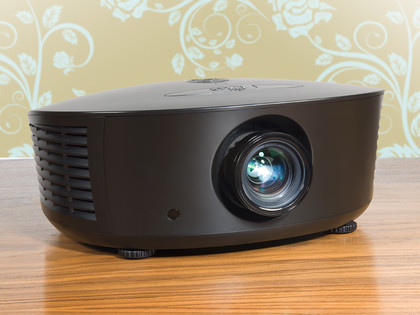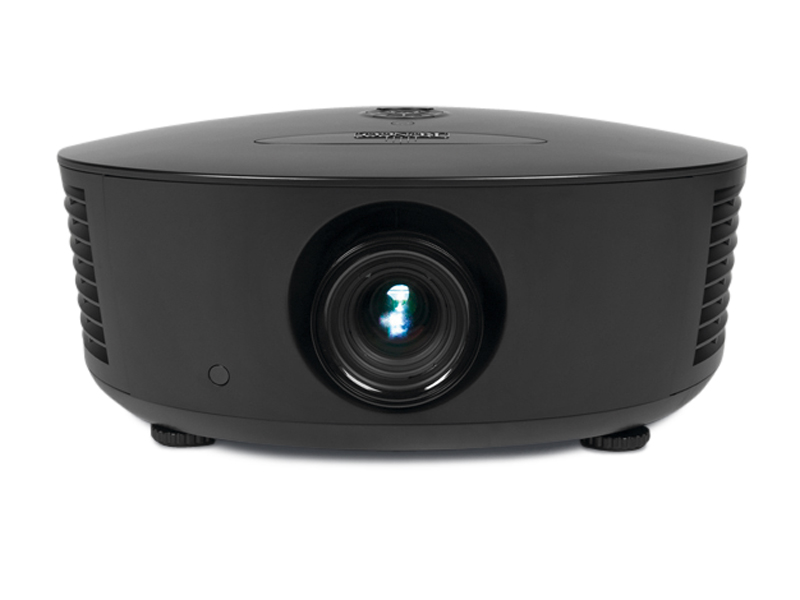TechRadar Verdict
Pros
- +
Superb colour response
- +
Brighter than claimed
- +
Excellent contrast
- +
Minimal DLP rainbowing or motion artefacts
Cons
- -
It runs rather noisily
Why you can trust TechRadar
Runco projectors tend to combine huge bodies with even bigger price tags, which makes the LS-5 a real surprise. For it's really not substantially larger than a mainstream domestic projector – slightly taller perhaps, but with a fairly standard footprint.
It looks good, too, thanks to its rounded, teardrop shape and smart black finish. When it comes to price, HCC can't recall a Runco projector with a price of less than five figures. Yet the LS-5 costs less.
In fact, so 'mass market' is this product that you may be able to get one directly from UK distributor Pulse Marketing, rather than going through Runco's normal Custom Installation route.
Of course, simply being more affordable doesn't automatically make the LS-5 a great buy. It still needs to deliver on the picture and feature fronts.
The LS-5's installation flexibility can also be seen in its provision of two ISF presets, supported by the same extensive colour management system used on much higher-end Runco models, plus 10 separate sharpness controls, colour space/temp/gamut/'SatCo' (colour booster) options, and RGB offset and gain adjustments.
Kiss my iris
The projector also offers manual vertical and horizontal image shifting, and ConstantContrast and AdaptiveContrast options that can automatically adjust the projector's aperture in response to the image content.
Other projectors have dynamic iris features, too, but Runco's is exceptionally advanced, comprising 200 different aperture positions, an unusually low-mass actuator and an ability to function at the frame rate of the incoming signal.
More impressive flexibility concerns the lens options; as well as 1.86-2.2 standard and 1.56-1.85 short-throw lens options, Runco also does its own easily attached anamorphic lenses.
The LS-5 seems robustly built, but is surprisingly noisy. Runco's own figures suggest a quite high 30dB volume level. The fan noise is at least constant and so is easier to 'filter out' mentally. But it's still something an installer needs to work round.
The noise factor becomes easier to forgive, though, when you find yourself staring in amazement at its sensationally bright, dynamic and lustrously rich pictures. Images pop off the screen in a way no cheaper projector we've ever seen gets close to.
And, remarkably, the LS-5's brightness and dynamism is achieved without compromising contrast. For within a single, punchy frame it's easily possible to find rich, detailed dark areas right alongside punchy, bright areas.
This is particularly true with the AdaptiveContrast functionality operational, so it's a relief to discover that this feature hardly ever generates a brightness jump that's distractingly obvious.

Thanks to the projector's superb automatic judgement of brightness and contrast, the LS-5 also produces a greater sense of image depth than arguably any other single-chip DLP projector we've seen – an achievement further enhanced by the image's stunning sharpness. The LS-5 seems completely free of the sort of clarity issues that often hamper single-chip DLP projectors. There's almost no rainbow effect, in spite of the image's gorgeously rich, bright tone.
Meanwhile, the tonal richness and diversity is mesmerising, with a level of dynamism that's potent enough to justify the projector's price tag. The LS-5's NegativePulse lamp technology (which adjusts the lamp output for each colour wheel segment) to improve colour bit depth, clearly works extremely well.
Chip passes muster
I can't fault the LS-5's pictures. It consistently produces images of such intensity, clarity and stability that I find it hard to believe they're not coming from a three-chip DLP projector. And you can't give a single-chip DLP model higher praise.
Follow TechRadar Reviews on Twitter: http://twitter.com/techradarreview
John has been writing about home entertainment technology for more than two decades - an especially impressive feat considering he still claims to only be 35 years old (yeah, right). In that time he’s reviewed hundreds if not thousands of TVs, projectors and speakers, and spent frankly far too long sitting by himself in a dark room.

